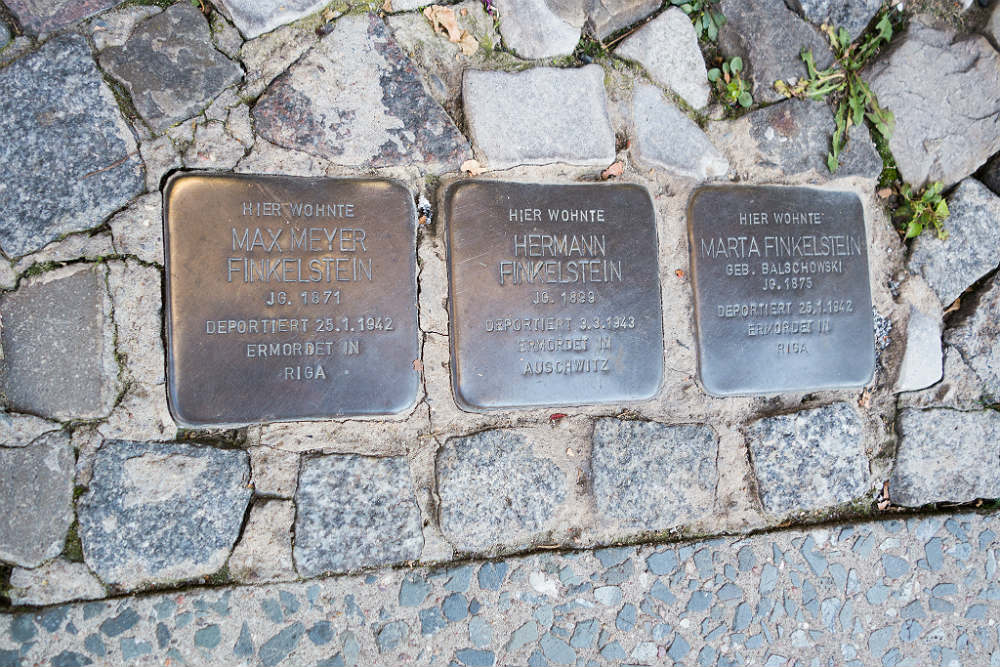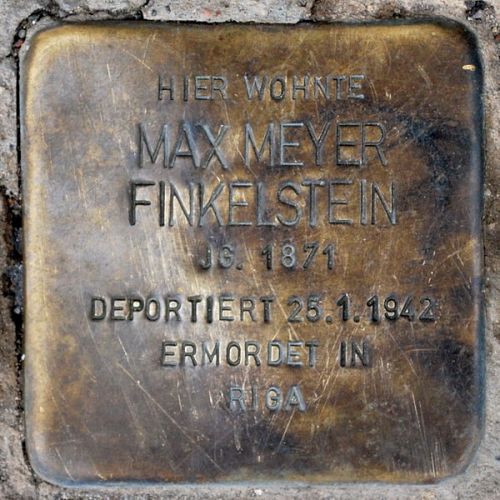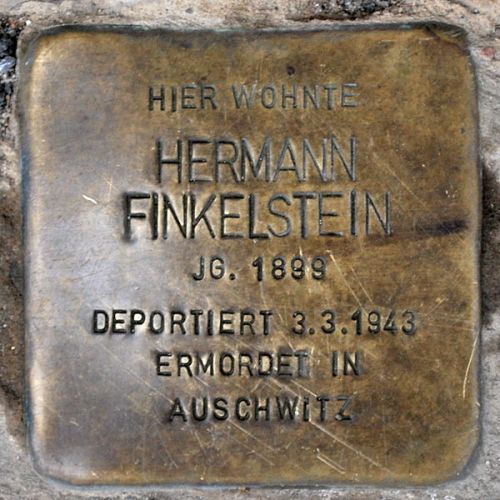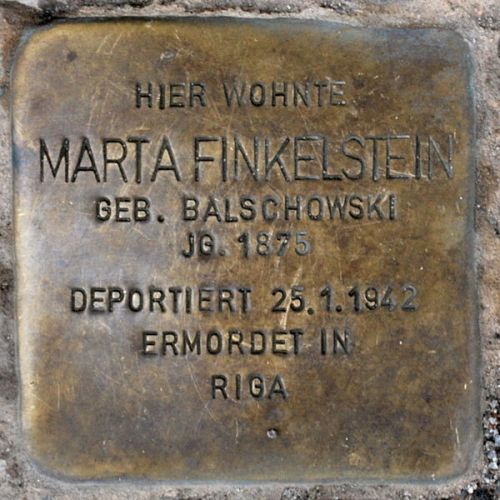Stumbling Stones Hussitenstraße 6
These small, brass memorial plaques (Stolpersteine or stumbling stones) commemorate:
* Max Meyer Finkelstein, born 1871, deported 25 January 1942, murdered in Riga.
* Hermann Finkelstein, born 1899, deported 3 March 1943, murdered in Auschwitz.
* Marta Finkelstein née Balschowski, born 1875, deported 25 January 1942, murdered in Riga.
Little information was found about the lives of Max Meyer Finkelstein, a merchant, his wife Marta, and their son Hermann. Their daughter Miriam, who survived, wrote that Hermann was not married. The German Federal Archives records show that Max and Marta had died in Theresienstadt, while the Free University of Berlin database shows their place of death in Riga. Riga is more consistent with the date of deportation.
On 25 January 1942, a train left Berlin with 1,021-1,044 deportees packed into freight cars. During the 5-day winter journey, many deportees froze to death. On arrival outside Riga, some deportees, especially the elderly, were murdered immediately – suffocated in gas trucks or shot in the Rumbula forest. Researchers have estimated that ony 6-13 of the persons on this transport survived the war.
"Stolpersteine" is an art project for Europe by Gunter Demnig to commemorate victims of National Socialism (Nazism). Stolpersteine (stumbling stones) are small, 10x10cm brass plaques placed in the pavement in front of the last voluntary residence of (mostly Jewish) victims who were murdered by the Nazis. Each plaque is engraved with the victim’s name, date of birth, and place (mostly a concentration camp) and date of death. By doing this, Gunter Demnig gives an individual memorial to each victim. One stone, one name, one person. He cites the Talmud: "A human being is forgotten only when his or her name is forgotten."
Do you have more information about this location? Inform us!
Source
- Text: Fedor de Vries & Anne Palmer
- Photos: Thom Quine (1), Franz Richter (2), Franz Richter (3), Franz Richter (4)
- Yad Vashem Central Database of Shoah Victims’ Names
- Yad Vashem Deportation Database
- Stolpersteine.eu
Nearby
Museum
- Berliner Unterwelten (Air Raid Shelter Brunnenstraße) - Berlin
- Anne Frank Centre - Berlin
- Otto Weidt’s Workshop for the Blind - Berlin
Point of interest
- Bullet Impacts Grave Memorials Dorotheenstädtischer Friedhof - Berlin
- Museum für Naturkunde - Berlin
- Single Person Bunkers Brunnenstraße - Berlin
Monument
- Memorial Stone Victims World War 2 and the Dividing of Germany - Berlin
- Memorial Kurt Klinke - Berlin-Gesundbrunnen
- Memorial Ewald Vogt - Berlin-Mitte
Cemetery
- Mass Grave Germans Domfriedhof I - Berlin
- German War Graves Dorotheenstädtischer Friedhof - Berlin
- Invalidenfriedhof - Berlin
Remembrance Stone
- Stumbling Stone Hussitenstraße 7-8b - Berlin-Gesundbrunnen
- Stumbling Stones Strelitzer Straße 25 - Berlin-Mitte
- Stumbling Stone Strelitzer Straße 58 - Berlin-Mitte









